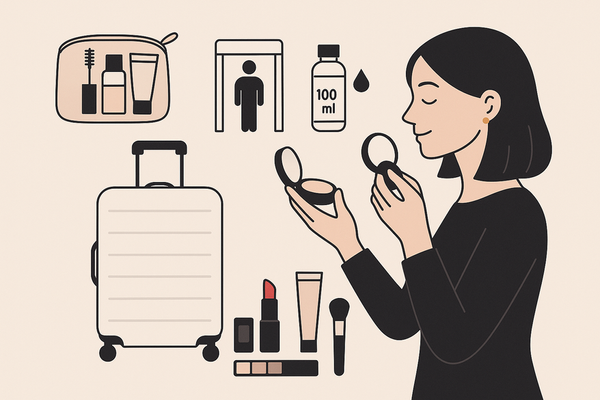Top Makeup Data Analytics Tips to Drive Your Beauty Brand
Discover top makeup data analytics tips for trend forecasting, segmentation, and marketing optimization to boost your beauty brand's success.

Estimated reading time: 8 minutes
Key Takeaways
- Trend Forecasting: Predict emerging shades and seasonal demand with AI-driven models.
- Customer Segmentation: Create hyper-personalized campaigns by skin tone, age, and behavior.
- Marketing Optimization: A/B test messaging, track ROI by channel, and refine influencer partnerships.
- Inventory Management: Use demand forecasting to cut overstocks and stockouts.
- Future-Ready Insights: Embrace AI, AR try-ons, voice data, and blockchain for next-gen personalization and transparency.
Table of Contents
- Introduction
- 1. Understanding Makeup Data Analytics
- 2. Benefits of Data-Driven Beauty Analytics
- 3. Actionable Makeup Data Analytics Tips
- 4. Overcoming Challenges & Best Practices
- 5. Future Trends in Makeup Data Analytics
- Conclusion & Next Steps
- FAQ
Introduction
Makeup data analytics tips are essential for beauty brands facing fierce competition, rapid trend cycles, and growing demand for personalization. As consumer preferences shift faster than ever, relying on gut instinct alone puts brands at risk of missed opportunities and overstocked inventory. Makeup data analytics applies advanced methods—predictive modeling, AI-driven classification, and sentiment analysis—to cosmetics-specific data such as shade preferences, virtual try-on results, and seasonal trends. This approach goes beyond generic analytics by focusing on insights unique to makeup sales, reviews, social media chatter, and user-generated content.
For automated makeup look analysis and shade-matching, consider using Makeup Check AI as part of your toolkit. It streamlines data capture and enhances real-time insights into customer preferences.
By combining real-time dashboards with customer segmentation models, beauty brands can forecast demand, optimize marketing campaigns, and launch products that resonate. A recent study found brands leveraging beauty analytics outperform peers in both speed-to-market and customer satisfaction. Whether you’re a startup or an established label, these tips will help you harness data-driven decision-making, reduce waste, and deliver personalized experiences that build loyalty.
1. Understanding Makeup Data Analytics
Definition
Makeup data analytics refers to using advanced analytic methods—predictive analytics, AI algorithms, and machine learning—to process and interpret cosmetics-specific data. This includes shade popularity, virtual try-on metrics, seasonal variations, and social media conversations.
Key Data Sources
- Sales Data: Point-of-sale figures, SKU-level trends, and inventory turnover rates.
- Customer Reviews: Sentiment analysis from e-commerce sites and review platforms.
- Social Media Trends: Hashtag tracking, influencer campaigns, and engagement metrics.
- Market Research: Consumer surveys, competitor benchmarking, and category performance data.
- Virtual Try-On & Face Analysis: Usage metrics and shade-matching feedback capture how real consumers experiment with products online. Virtual try-on insights.
Why Beauty Brands Shift to Data-Driven Decision-Making
- Real-Time Insights: Dashboards update instantly, enabling fast reactions to trend spikes or inventory gaps.
- Personalized Experiences: Segment audiences by skin tone, age, and purchase history.
- Inventory Optimization: Demand forecasting reduces overstocks and stockouts.
- Faster Trend Response: Machine learning models detect micro-trends before they peak.
2. Benefits of Data-Driven Beauty Analytics
Trend Forecasting: Predictive models identify emerging makeup trends and forecast seasonal demand, reducing time-to-market by up to 30%.
Customer Segmentation: Granular profiles enable targeted campaigns and hyper-personalized product suggestions, boosting conversion rates.
Marketing Optimization: A/B testing of messaging and creative; track ROI by channel; optimize influencer partnerships based on engagement metrics.
Inventory Management: Demand forecasting models minimize stockouts and overstocks, lowering waste and markdowns.
Product Launch Success: Align new launches with real-time preferences, increasing initial adoption and trial-to-purchase conversions.
Mini Case Study: L’Oréal uses predictive analytics to refine ad spend and innovate formulas, achieving a 25% lift in digital engagement and a 15% reduction in launch cycle time.
3. Actionable Makeup Data Analytics Tips
Tip 1: Select & Integrate the Right Data Sources
Combine POS sales, social listening, website behavior, and virtual try-on metrics into a unified dataset. Use ETL pipelines to centralize data and maintain consistency.
Tip 2: Leverage the Best Analytics Tools
Google Analytics for web traffic; Tableau or Power BI for dashboards; specialized platforms like Mavenoid for AI troubleshooting, Cortex for content performance, and AI Makeup Coach.
Tip 3: Visualize Data for Actionable Insights
Build dashboards highlighting shade popularity (heat maps), trend timelines (time-series charts), and customer journey funnels.
Tip 4: Integrate Analytics into Brand Strategy
Embed data checkpoints in campaign planning, product ideation, pricing strategies, and launch timing with regular cross-functional reviews.
Tip 5: Iterate & A/B Test Based on Insights
Run experiments on messaging, features, and pricing. Track uplift metrics and document findings in a centralized playbook.
Tip 6: Develop Predictive Models for New Product Innovation
Use regression and classification to anticipate best-selling shades or formula tweaks before launch. Retrain models with post-launch feedback.
Tip 7: Monitor Social Listening for Micro-Trends
Set real-time alerts for niche hashtags and influencer collaborations. Feed these signals into your product roadmap.
4. Overcoming Challenges & Best Practices
Challenge: Fragmented Data & Rapid Trend Shifts
Best Practice: Adopt an ETL pipeline to centralize data, with weekly model updates to capture the latest trends.
Challenge: Privacy & Compliance
Best Practice: Implement GDPR and CCPA standards—anonymize PII, obtain clear consent, and use secure encryption.
Challenge: Data Quality & Relevance
Best Practice: Schedule regular data-cleaning cycles. Remove outdated entries and monitor for anomalies.
Additional Best Practices:
- Maintain Agility: Revisit data models quarterly to incorporate new channels like TikTok and live commerce.
- Cross-Functional Training: Educate marketing, R&D, and supply chain teams on analytics reports.
- Transparent Reporting: Use clear visualizations and annotations to explain model assumptions.
5. Future Trends in Makeup Data Analytics
AI-Powered Insights: Advanced machine learning and neural networks will enable hyper-accurate trend predictions and automated color-match recommendations at scale. Learn more.
Hyper-Personalization: Real-time offers and micro-segmentation based on omni-channel behavior will deliver individualized marketing at the moment of purchase.
Edge Technologies: Facial analysis in AR try-ons will produce instant sentiment scores and usage metrics, feeding back into R&D.
Voice & Chatbot Data: Analyzing voice search queries and chatbot interactions will uncover unmet product needs directly from customers.
Blockchain for Transparency: Distributed ledgers will verify product authenticity and sustainability claims, building trust with eco-conscious consumers.
Conclusion & Next Steps
Embracing these makeup data analytics tips empowers beauty brands to forecast trends, segment customers, optimize marketing, and manage inventory with confidence. Start by choosing one analytics tool, building your first dashboard, and scheduling cross-functional analytics review meetings. Dive deeper by exploring your internal resources on beauty marketing strategies, AI in cosmetics, and customer segmentation best practices.
FAQ
Q: What is makeup data analytics?
A: It’s the application of predictive modeling, AI algorithms, and machine learning to cosmetics-specific data for informed product development, marketing, and inventory planning.
Q: How do I choose the right analytics tools?
A: Align tools with your objectives: use Google Analytics for web insights, BI platforms for dashboards, and specialized beauty analytics services for virtual try-on and sentiment analysis.
Q: How can I forecast makeup trends accurately?
A: Combine social listening, sales data, and seasonal indicators in predictive models. Update regularly to capture emerging micro-trends.
Q: What are the best practices for data privacy?
A: Comply with GDPR and CCPA by anonymizing personal data, securing customer consent, and encrypting sensitive information.




